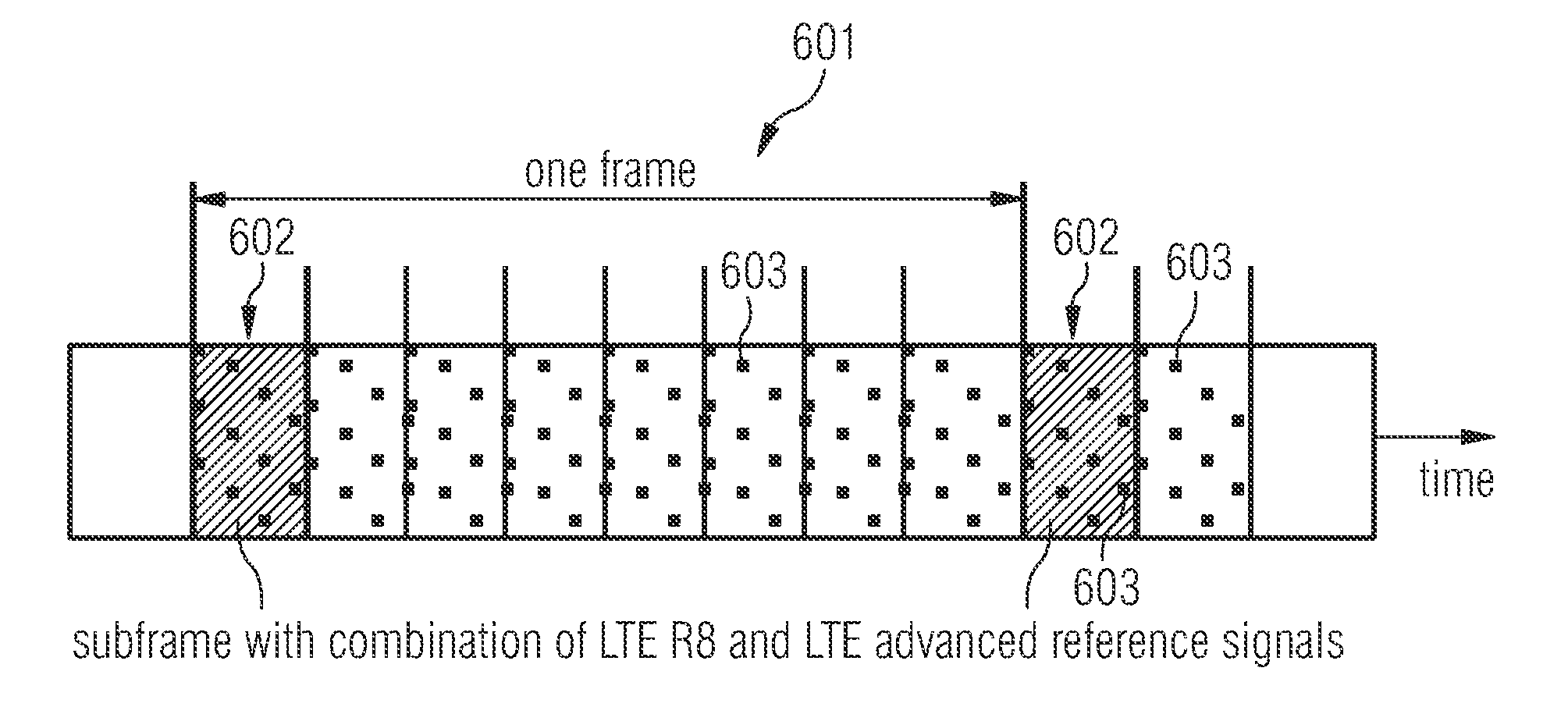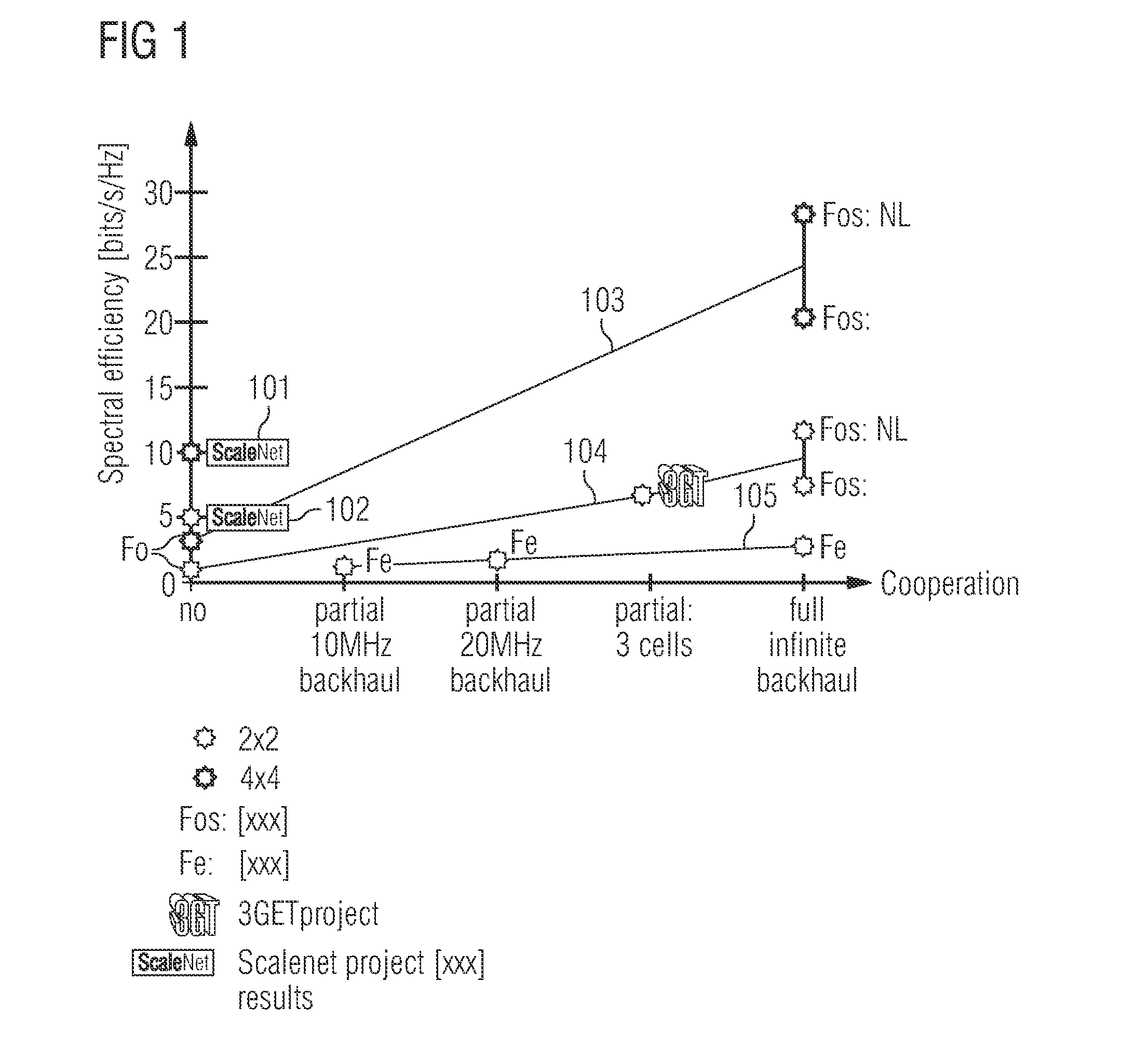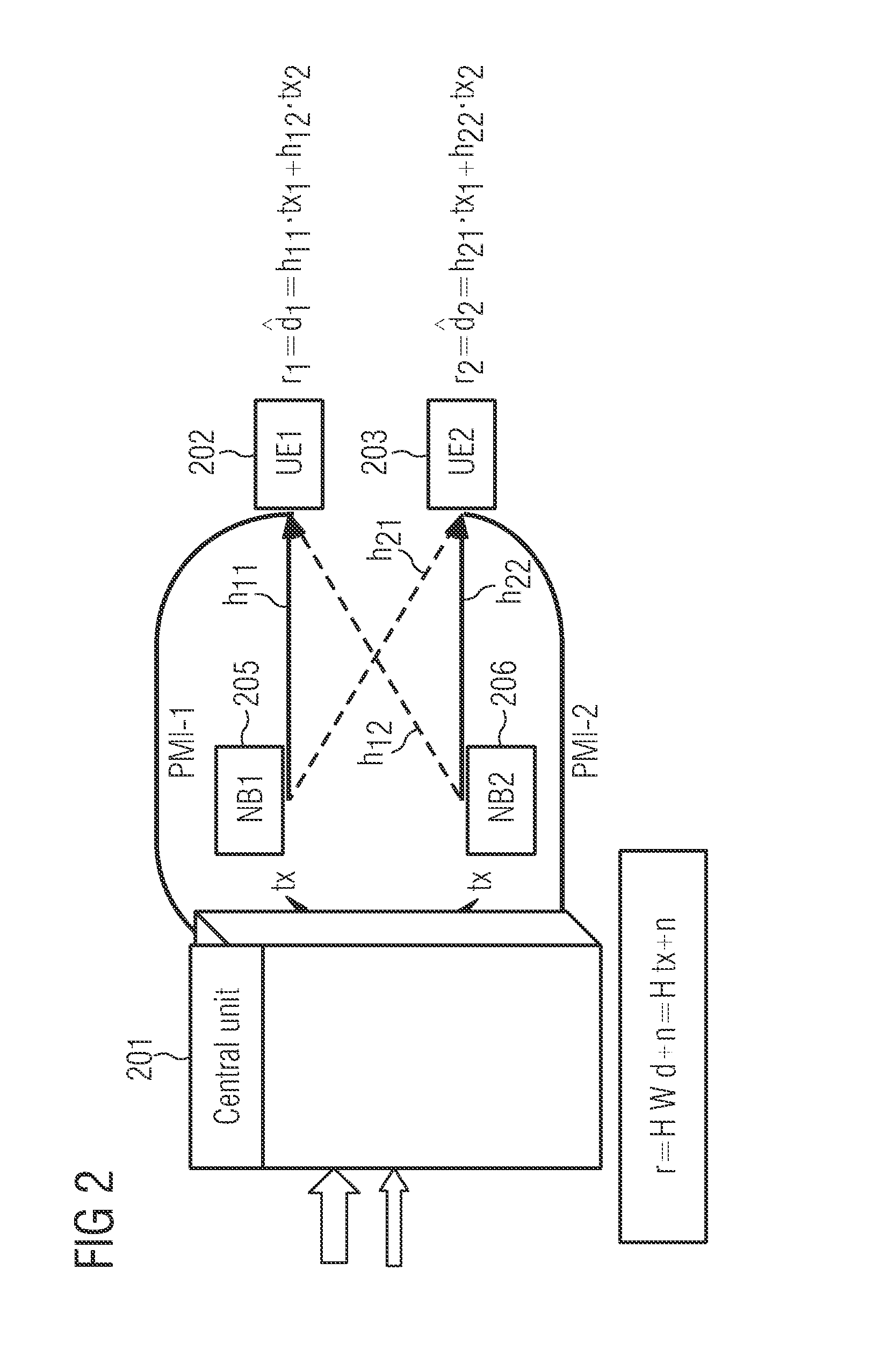Method and Communication Network Element for Transmitting Reference Signals
a communication network and reference signal technology, applied in the field of communication network elements and methods of transmitting data, can solve the problems of large amount of data on the backbone network, inability to fully cooperate, and limiting the performance of data transmission known in the prior art, so as to minimize inter-cell crosstalk, improve multi-cell channel estimation, and design full flexibility
- Summary
- Abstract
- Description
- Claims
- Application Information
AI Technical Summary
Benefits of technology
Problems solved by technology
Method used
Image
Examples
Embodiment Construction
[0052]The illustration in the drawing is schematically. Identical or similar elements are labeled with identical or similar reference signs.
[0053]In the following, referring to FIGS. 1 to 3, some basic principles of a method of transmitting data and communication network elements according to exemplary embodiments will be explained.
[0054]FIG. 1 schematically illustrates potential gains for different degrees of cooperation. That is, FIG. 1 shows the spectral efficiency in bits per seconds and hertz (bits / (s*Hz)) over different levels of cooperation. In particular, several schemes are depicted for several degrees of cooperation. The spectral efficiency for the “ScaleNet” results 101 and 102 represent the results for optimum MU-MIMO systems without cooperation but with full channel state information (CSI) knowledge. Furthermore, the “Fo” lines 103 and 104 represent the theoretical upper bounds for each level of cooperation, while the line “Fe”105 represents the results for a 5 MHz syst...
PUM
 Login to View More
Login to View More Abstract
Description
Claims
Application Information
 Login to View More
Login to View More - R&D
- Intellectual Property
- Life Sciences
- Materials
- Tech Scout
- Unparalleled Data Quality
- Higher Quality Content
- 60% Fewer Hallucinations
Browse by: Latest US Patents, China's latest patents, Technical Efficacy Thesaurus, Application Domain, Technology Topic, Popular Technical Reports.
© 2025 PatSnap. All rights reserved.Legal|Privacy policy|Modern Slavery Act Transparency Statement|Sitemap|About US| Contact US: help@patsnap.com



